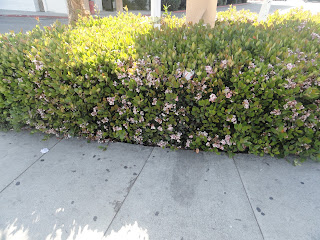Common Name: Coral Aloe
Scientific Name: Aloe striata
Clade: This plant is a monocot, it is a vascualr, seed producing plant, angiosperm.
Data Collected: April 4, 2012
Location collected: Northeast Corner of La cienega and 18th Street. around it were another like ten plants of the same kind.
Habitat: It's native region is the Mediterranean. There it is subtropical.
Special Notes: I didnt think this plant was going to be aloe but it was. It has very similar medical uses: burns, releasing toxins, and preventing sucking.
Resources: http://plants.usda.gov/java/profile?symbol=ALGR8&photoID=algr8_003_ahp.tif
Scientific Name: Aloe striata
Clade: This plant is a monocot, it is a vascualr, seed producing plant, angiosperm.
Data Collected: April 4, 2012
Location collected: Northeast Corner of La cienega and 18th Street. around it were another like ten plants of the same kind.
Habitat: It's native region is the Mediterranean. There it is subtropical.
Special Notes: I didnt think this plant was going to be aloe but it was. It has very similar medical uses: burns, releasing toxins, and preventing sucking.
Resources: http://plants.usda.gov/java/profile?symbol=ALGR8&photoID=algr8_003_ahp.tif
http://faculty.ucc.edu/biology-ombrello/pow/aloe_vera.htm
http://www.plantzafrica.com/plantab/aloestriata.htm






















